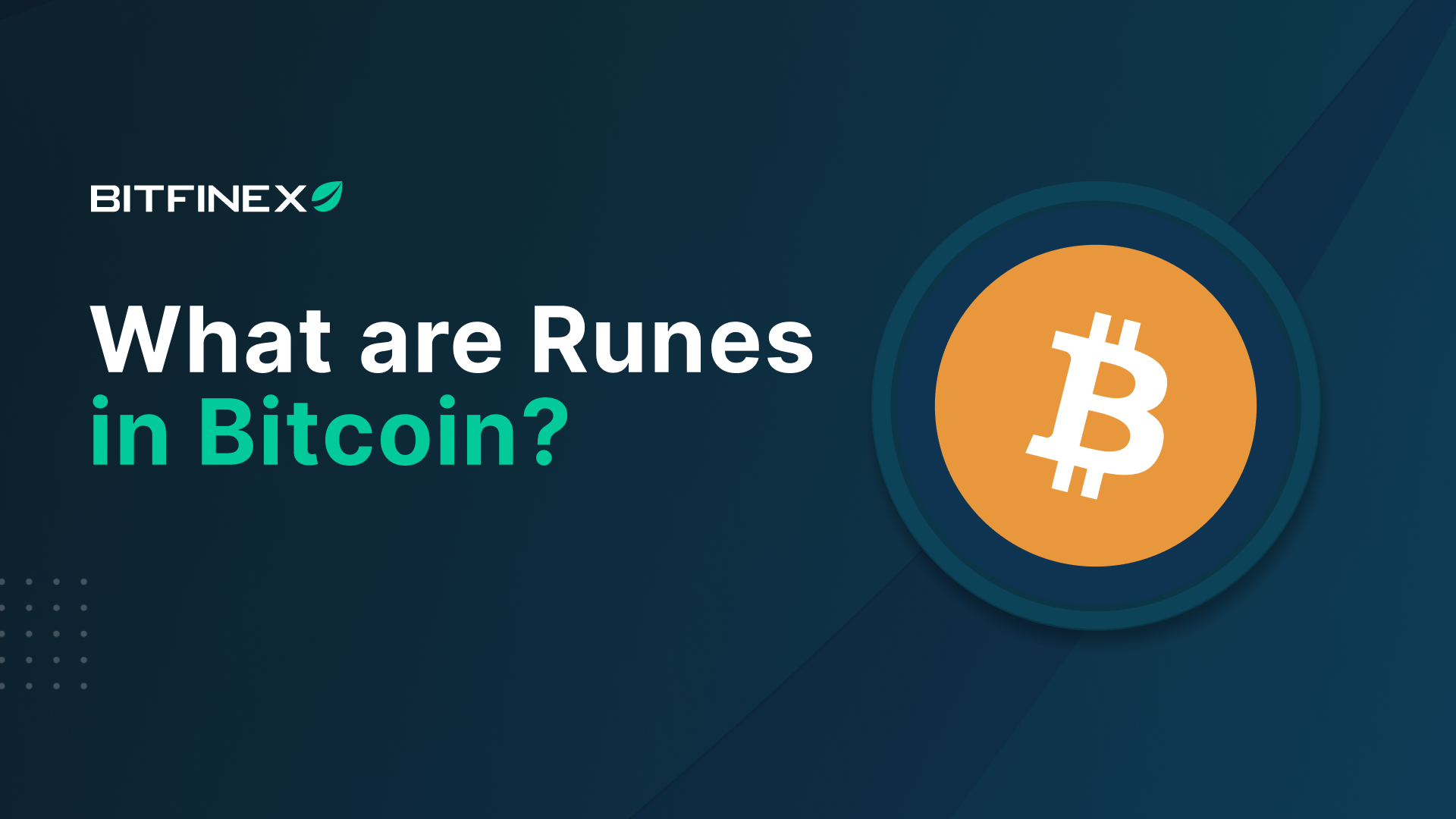06 Oct What are Runes in Bitcoin?
Bitcoin Runes are distinctive, fungible tokens that exist at the Bitcoin blockchain. They’re designed to constitute fungible belongings with distinct traits and metadata. Casey Rodamor, the author of the Ordinals protocol, not too long ago dropped a suggestion for a alternative to the BRC-20 fungible token protocol, this alternative is referred to as Runes.
Decoding the Enigma of Bitcoin Runes
Within the burgeoning global of Bitcoin-based tokens, the Runes protocol stands as a disruptive newcomer, with the possible to recalibrate the present dynamics of poorly carried out token schemes on Bitcoin, spawned from Ordinals.
Runes have been advanced via Casey Rodarmor, the author of the Ordinals protocol. Runes intention to supply a user-friendly, UTXO-based choice to present tokenisation protocols reminiscent of Ordinals, ORC-20, BRC-20, and Stamps.
Runes are a brand spanking new form of fungible token at the Bitcoin community. Those tokens range from present choices in numerous tactics. Initially, Runes are local to Bitcoin’s Unspent Transaction Output (UTXO) type. This minimises the introduction of “junk” UTXOs, thus enabling extra accountable UTXO control and a smaller on-chain footprint.
The Bitcoin blockchain is designed to be a minimum and environment friendly ledger for shifting worth thru Bitcoin transactions. Introducing tokenisation schemes like Ordinals and Stamps can upload further information to this lean construction, which may have repercussions for the blockchain’s scalability and function.
Ordinals and Stamps introduce further information into every transaction they’re part of. For instance, Ordinals “inscribe” Satoshis with more information, and Stamps upload “information blobs” to create virtual artefacts. Whilst every piece of information could also be small, the mixture impact may well be vital, in particular if those tokenisation strategies transform extensively followed.
In terms of Stamps, the information is saved on-chain and can’t be pruned, that means that it completely takes up area at the blockchain. That is other from different methods the place further information may just probably be saved off-chain or pruned to avoid wasting area.
Designed for ease-of-use, Runes lack the implementation complexity continuously present in different protocols, like Ordinals, Stamps, or BRC-20 tokens. Runes cling the promise for a number of impactful adjustments within the Bitcoin token ecosystem. By way of adhering to Bitcoin’s UTXO type, Runes be offering a type of “hurt aid” via lowering the needless bloat of the UTXO set, a serious problem with present protocols like BRC-20 and Stamps.
Its more effective design may just draw in extra developer pastime and participation, probably accelerating innovation inside the Bitcoin construction neighborhood. A continuing person enjoy may just draw in extra mainstream adoption as customers don’t wish to take care of local tokens or take care of off-chain complexities.
Ordinals, Stamps, BRC-20s, and Runes, Oh My!
What are Ordinals & Inscriptions?
Ordinals and Inscriptions be offering a relatively contentious means for producing NFTs inside the Bitcoin community. Those are etched onto particular person Satoshis, Bitcoin’s smallest unit, with 100 million Satoshis making up a unmarried Bitcoin. Via Ordinals, those Satoshis achieve numismatic importance and may also be “marked” with any selected content material, forming distinct virtual belongings at the Bitcoin blockchain that may be purchased or offered. Even though this knowledge is maintained on-chain, its garage design permits for non-compulsory pruning.
Ordinals, via giving particular person Satoshis distinctive traits or “numismatic worth,” may just probably compromise the fungibility of Bitcoin. In a superbly fungible asset, every unit is interchangeable with some other unit; when it comes to Bitcoin, this implies one Satoshi must be similar to every other. On the other hand, Ordinals successfully ‘tag’ Satoshis with distinctive attributes, making them distinguishable from one every other.
This would create a marketplace the place positive Satoshis are valued greater than others because of their distinctive Ordinal Inscriptions, thereby breaking the inherent fungibility that is without doubt one of the cornerstone options of cryptocurrencies like Bitcoin. This departure from fungibility may just introduce complexities into the transaction procedure and can have a much broader have an effect on on how Bitcoin is used and valued.
What are Stamps?
Stamps and SRC-20 tokens proportion similarities with Ordinal Inscriptions and BRC-20 tokens, as these types of tokenisation schemes utilise the Bitcoin blockchain to embed arbitrary information, thereby developing distinctive, Bitcoin-native virtual pieces. On the other hand, Stamps embed information into the Bitcoin blockchain that can’t be pruned.
Which means the information is completely saved on each complete node, contributing to an ever-growing blockchain measurement. The addition of information blobs via Stamps contributes to “blockchain bloat.” As extra other people use Stamps so as to add further information to transactions, the scale of every block can building up, probably filling blocks quicker and leaving much less area for monetary transactions. Over the years, it will make it extra bulky and resource-intensive to function a complete node, thereby centralising the community and making it much less out there to reasonable customers.
Moreover, SRC-20 tokens range from BRC-20 tokens in accordance with Ordinals in that they don’t employ Segwit witness information; as a substitute, they’re a part of multi-signature transactions the place the SRC-20 token knowledge is contained inside the area allotted for the opposite key’s signature information.
What are BRC-20 tokens?
BRC-20 tokens construct upon the concept that of Ordinal Inscriptions via including an extra layer of complexity. As a substitute of simply embedding a serial quantity right into a unmarried Satoshi, BRC-20s utilise JSON (JavaScript Object Notation) to create elementary token contracts for issuance. Those tokens have a preset provide prohibit and showcase positive constraints when in comparison to different tokenisation strategies.
What are ORC-20 Tokens?
ORC-20 tokens beef up the manner to begin with advanced for BRC-20 tokens. Like their predecessors, they use Segwit witness information and JSON however include further complicated options. ORC-20 tokens be offering the versatility of a variable provide and will make use of the “mint” serve as to facilitate intra-transaction transfers, thereby preserving blockspace.
What are Runes and How are They Other?
“Runes” constitute a unique method to making a fungible token protocol. Not like present protocols reminiscent of BRC-20, Runes are UTXO-based, that means they combine seamlessly with Bitcoin’s present structure whilst minimising needless outputs. Runes are uniquely known balances held inside UTXOs (Unspent Transaction Outputs). Transactions involving runes comprise particular protocol messages initiated thru an OP_RETURN output and extra information pushes.
This permits for the versatile project and switch of Rune balances, with invalid protocol messages resulting in the burning of Runes as a safeguard for long run upgrades. Moreover, Runes may also be issued with particular human-readable symbols and decimal configurations, and their issuance and switch don’t require the usage of local tokens, making the protocol much less bulky and extra user-friendly. General, Runes be offering a more effective, extra intuitive method to take care of fungible tokens at the Bitcoin blockchain.
Will Runes Catch On, or Will They Fizzle Out Like Different Token Fads?
The Runes protocol stands at a crossroads. On one hand, it provides a simplified, environment friendly choice to BRC-20, with the possible to deal with Bitcoin’s inefficient tokenisation problems presented by the use of Ordinals. Alternatively, their fast, virtually impulsive, adoption carries the danger of long-term sustainability. The neighborhood will have to come to a decision whether or not it’ll prioritise considerate, scalable answers or proceed down the trail of recklessness for fast good points.
Runes constitute a promising however arguable construction within the realm of Bitcoin meta-protocols. Its simplified, environment friendly design stands in stark distinction to the inefficiencies of BRC-20, Stamps, and ongoing debates inside the Ordinals neighborhood. Runes promise to deliver transaction price earnings, developer pastime, and extra customers to the Bitcoin community. The important thing query is whether or not Runes will be offering long-term scalability and sustainability.
Because it stands, the Runes protocol may just both emerge as a groundbreaking answer for token capability and scalability or transform every other cautionary story of hasty blockchain innovation. The onus now lies at the neighborhood to decide its destiny.
The advent of Runes, Ordinals, and Stamps as new tokenisation protocols at the Bitcoin blockchain raises questions on their necessity and potency, in particular when in comparison to extra established protocols like Counterparty and Omni Layer.
At the beginning, Counterparty and Omni Layer have already been in use for a variety of years, profiting from neighborhood believe, real-world trying out, and ongoing construction. They’re extra mature protocols with higher person bases and reinforce networks, making them extra dependable possible choices for plenty of builders and end-users.
Secondly, complexity and person enjoy are vital issues. Runes, Ordinals, and Stamps introduce new mechanisms for tokenisation that can or would possibly not be offering any benefits over present answers. For instance, the UTXO-based state type utilized in Runes would possibly minimise “junk” UTXOs, nevertheless it introduces its personal complexities and would possibly not considerably make stronger upon the state fashions utilized in Counterparty or Omni Layer.
Thirdly, the advent of a couple of, differing tokenisation protocols can fragment developer consideration and assets. Each and every new protocol has its personal particularities, requiring effort and time to be informed. This dilutes the developer mindshare that may be focused on bettering a smaller set of well-understood and widely-used protocols.
Finally, probably the most largest demanding situations in blockchain generation is interoperability. The proliferation of a couple of tokenisation strategies might additional complicate the seamless change of tokens and belongings throughout other protocols, or Bitcoin “layers”, hampering the wider adoption of Bitcoin.
In abstract, whilst Runes, Ordinals, and Stamps be offering attention-grabbing approaches to tokenisation at the Bitcoin blockchain, they are going to constitute a redundant effort that fragments the ecosystem, somewhat than a significant development over present, extra sublime answers.

